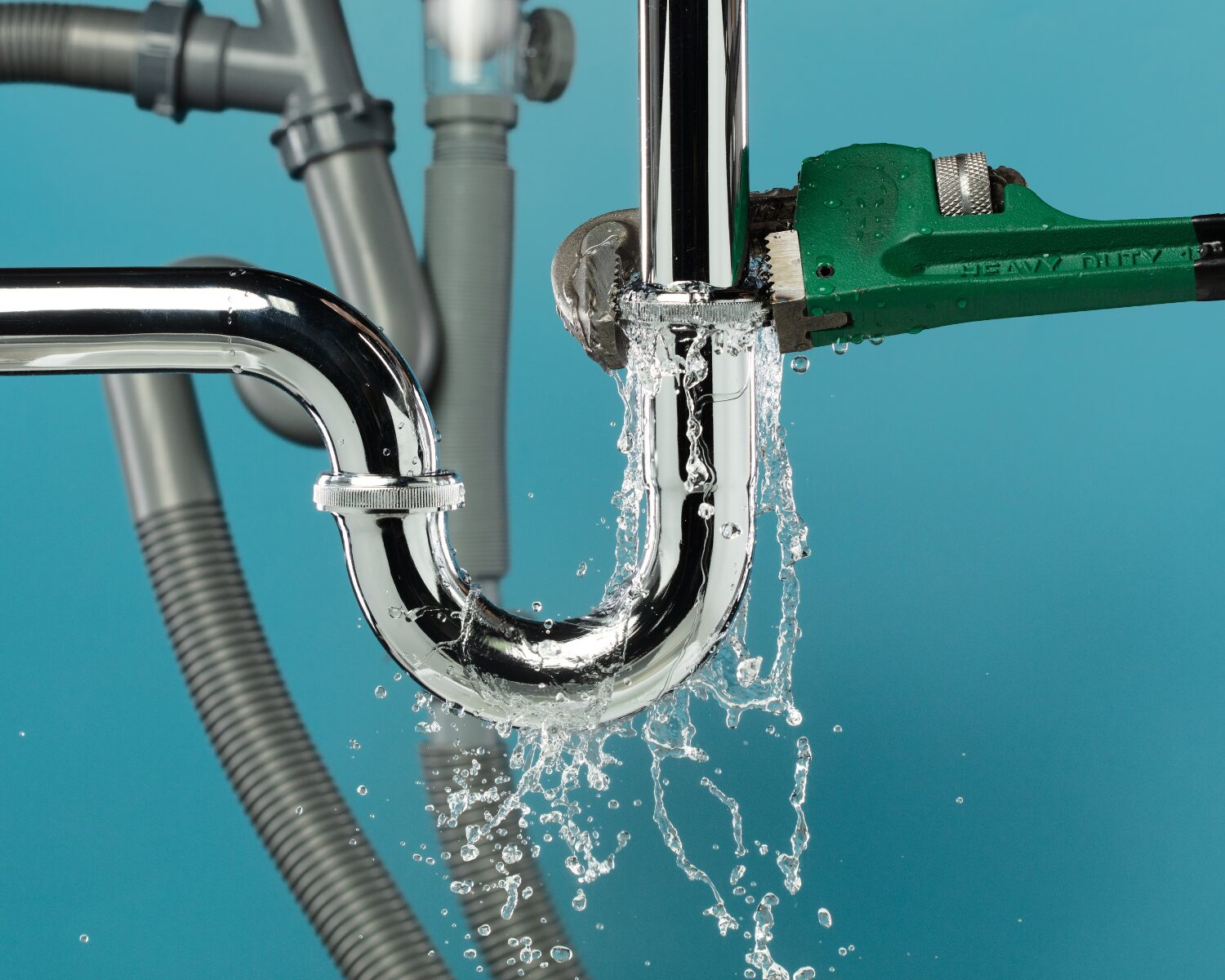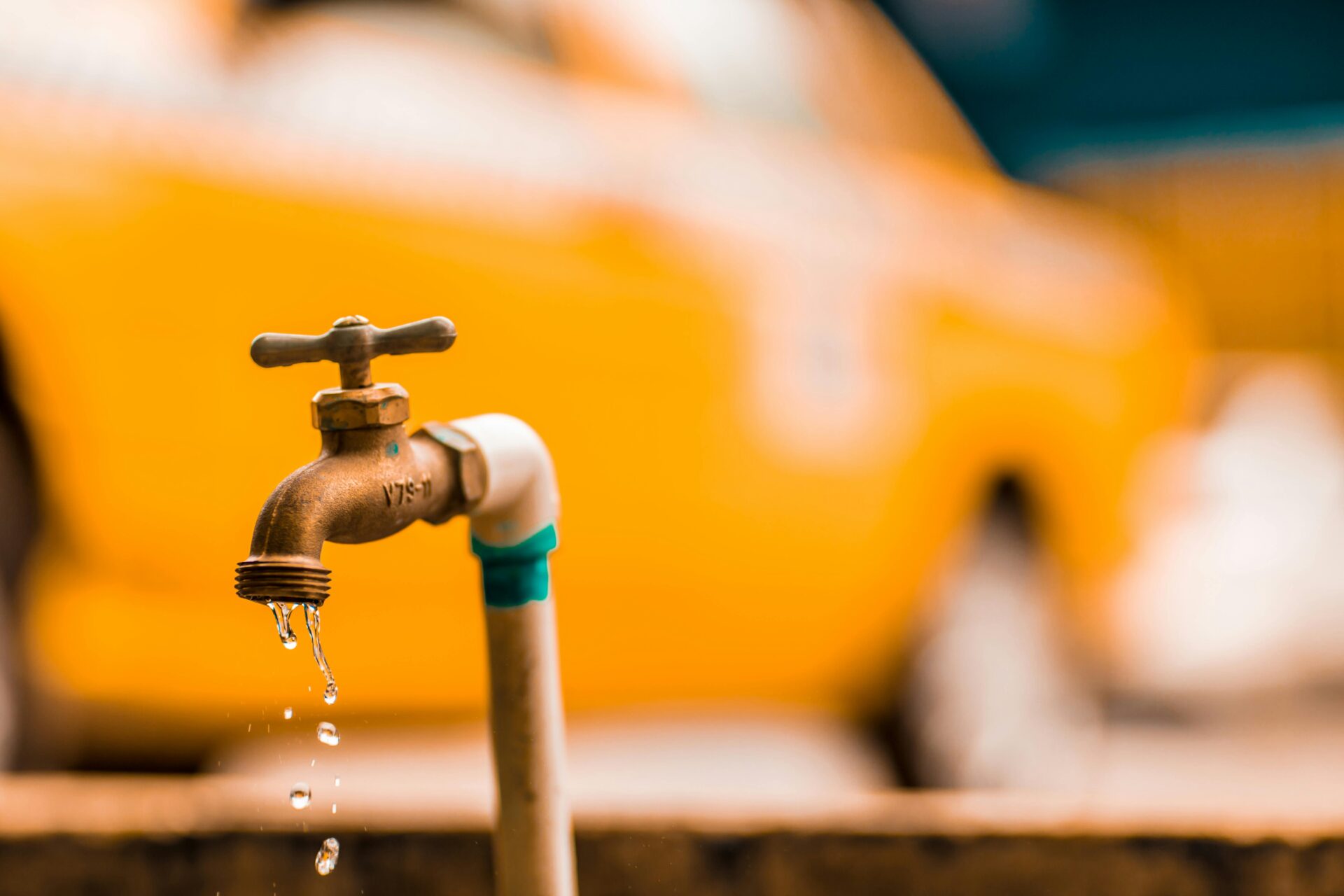
What To Do Before Help Arrives For A Burst Pipe
By: 911 Water Damage Experts
When you face a burst pipe, every second counts. Quick action can reduce the damage and costs, keeping your home and family safe.
In this guide, we’ll cover all the steps you should take before a professional arrives, so you can minimize water damage, stay safe, and prepare for an efficient repair process.
Let’s get right into it!
How To Handle A Burst Pipe
A burst pipe can flood your space in seconds, potentially leading to thousands of dollars in damage. Water damage from a burst pipe can cost upwards of $5,000, and if left untreated, it can climb even higher (source: Insurance Information Institute). Knowing how to act quickly and effectively before a plumber arrives is crucial. Here, we’ll walk you through each step to ensure you’re prepared.
Recognizing A Burst Pipe
Early recognition of a burst pipe is key to preventing extensive water damage. Some tell-tale signs include unusual sounds (like banging or gurgling), a sudden drop in water pressure, and damp walls, ceilings, or floors. If you spot puddles or notice your water bill suddenly skyrocketing, these could indicate a hidden burst.
Initial Safety Precautions
Safety should be your first concern. Begin by shutting off the water supply to stop the flow of water. Next, if any areas affected by the water are near electrical outlets, turn off the electricity in that part of your home. This step reduces the risk of electrical hazards. Ensure proper ventilation and avoid coming into contact with water that may be contaminated.
Locating The Main Water Valve
Knowing the location of your main water valve can save you time during an emergency. Typically, it’s located in a basement, utility room, or outside near the foundation. Once you locate it, turn the valve clockwise to shut it off. In some cases, you may have secondary valves for certain rooms, like bathrooms or kitchens, which can also be shut off individually to isolate the problem area.
Minimizing Water Damage
Once the water flow is stopped, work on containing any spread. Move furniture, rugs, electronics, and other valuables away from the wet area. Use towels, plastic bins, or buckets to absorb water and prevent it from seeping further into carpets, wood floors, or drywall.
Using Tools And Equipment To Control Water

If you have access to basic tools like buckets, towels, or mops, put them to work. Shop vacuums are particularly effective for sucking up large amounts of water. Portable water pumps can also be useful, though they’re not commonly available in most homes. Try to keep the space as dry as possible until help arrives.
Draining The Remaining Water
Once the main valve is turned off, there may still be residual water in the pipes. Drain the water from taps, starting with the lowest point in your home and working your way up. Flush toilets and open faucets to relieve pressure and reduce the likelihood of additional leaks.
Identifying The Cause Of The Burst
Understanding what caused the burst can help prevent future incidents. Common causes include freezing temperatures, corrosion, and pressure build-up due to blockages. Documenting any visible signs of damage can be helpful when speaking to your insurance provider or repair professional.
Temporary Patching And Sealing Techniques
If you spot the source of the burst and have the right materials, you can apply a temporary patch. Epoxy putty, rubber tape, and hose clamps can help stop the flow temporarily. These DIY fixes are temporary, but they may reduce water flow until a professional repair is done.
Documenting The Damage
Documentation is essential for insurance claims. Take photos and videos of the affected areas and damaged belongings. Write down any details about what happened and when you noticed the burst. The more comprehensive your documentation, the smoother the claim process will be.
Contacting A Professional For Repair
Find a reputable plumber as soon as possible. Look for one with positive reviews and ask about their experience with emergency repairs. When the plumber arrives, provide any details and photos you’ve documented. This information will help them assess the problem more efficiently.
Dealing With Insurance
Check your insurance policy to see if it covers water damage from burst pipes. Most home insurance policies in Canada cover sudden and accidental water damage, but they may exclude damages from neglect or poor maintenance. File a claim as soon as possible, providing photos, videos, and any estimates you’ve received.
Drying And Dehumidifying The Area
After the repair, drying the area is crucial to prevent mold growth. Mould can begin to develop within 24-48 hours in damp conditions, so acting quickly is essential (source: Canada Mortgage and Housing Corporation). Open windows and use fans or a dehumidifier to speed up the drying process.
Preventing Further Pipe Bursts
Take preventative steps to avoid future pipe bursts, especially in winter. Insulate exposed pipes, especially in unheated areas like basements and garages. Regularly inspect pipes for any signs of wear or corrosion and repair small leaks promptly to prevent larger issues.
Aftercare And Restoration
Once the water is gone and the pipes are repaired, you may need to restore affected areas. This could include replacing drywall, flooring, or baseboards. Address any minor repairs and give special attention to areas prone to mould. Proper restoration helps prevent long-term issues and maintains the value of your home.
FAQ
What Causes Burst Pipes?
Burst pipes are often caused by freezing temperatures, high water pressure, corrosion, and clogs. When water freezes inside a pipe, it expands and creates pressure, eventually causing the pipe to burst.
How Can I Prevent Pipes From Freezing?
Insulate exposed pipes, especially those in unheated areas. Keep your thermostat consistent, even at night, and consider leaving taps dripping slightly in extreme cold to prevent freezing.
Is Water Damage From A Burst Pipe Covered By Insurance?
In most cases, yes, home insurance policies cover sudden water damage, but coverage varies. Some policies exclude damages caused by neglect or lack of maintenance, so check your policy for specifics.
What Temporary Fixes Can I Use For A Burst Pipe?
You can use rubber tape, epoxy putty, or hose clamps for a temporary patch. These fixes will not solve the issue permanently but can help control water until professional help arrives.
How Do I Know If My Pipe Is About To Burst?
Look for signs like unusual sounds (banging or gurgling), decreased water pressure, and damp spots on walls, ceilings, or floors. If you notice any of these signs, inspect your pipes for vulnerabilities.
What Should I Do If The Burst Pipe Is Near An Electrical Outlet?
Immediately turn off the electricity to that area to avoid potential hazards. If water has entered electrical outlets, avoid touching anything and contact an electrician for advice.
How Quickly Does Mould Grow After A Burst Pipe?
Mould can begin growing within 24 to 48 hours in damp conditions. To prevent this, dry the area thoroughly and use a dehumidifier if necessary.
Can I Fix A Burst Pipe On My Own?
You can apply a temporary fix, but a burst pipe typically requires professional repair. Attempting to fix it without proper expertise may worsen the issue and lead to more damage.
How Long Does It Take To Repair A Burst Pipe?
Repair time varies depending on the damage’s severity and accessibility. Minor repairs may take a couple of hours, while extensive damage may require more time, especially if walls or floors need replacing.
What Should I Do After The Plumber Finishes Repairs?
Focus on drying the area thoroughly to prevent mould. Address any minor repairs, such as painting or replacing damaged drywall, and ensure the area is restored to its original condition.
Conclusion
Taking swift action when a pipe bursts can save you from significant water damage and costly repairs. By knowing what to do before help arrives, you can minimize risks and prepare for an efficient repair process. Remember, prevention is essential—regularly check your pipes, insulate exposed areas, and stay vigilant during winter. A little preparation goes a long way in avoiding burst pipes and ensuring peace of mind.
If you have any questions about our article “What To Do Before Help Arrives For A Burst Pipe” or need fire damage restoration services contact us at 1-833-WE-DRY-IT or connect with us on social media.
Related Posts
Burst Pipe Restoration Articles
What To Do Before Help Arrives For A Burst Pipe
How To Detect A Leaking Or Burst Pipe In Your Home
Water Damage: Burst Pipes…Here’s What To Do When Your Pipes Freeze
A Pipe Burst In My Business Building – What Do I Do?
What To Do When A Pipe Bursts In Your Building? Our Experts Have Answers
Burst & Damaged Pipes: How Leaks Can Cause Water Damage
What To Do When A Water Pipe Bursts In Your Apartment
How To Prevent Frozen Pipes And What To Do If They Freeze Anyway
Fire Damage Restoration Articles
The Dos And Don’ts Of Commercial Fire Damage
Forest Fire House Damage: What To Do After Your House Is Damaged By A Forest Fire And Who to Call?
Fire prevention tips for the summer
How to clean up after a house fire
Fire damage restoration checklist
Fire damage tips: 6 hazards property owners miss
How smoke from fires can negatively affect your health
What are the most common causes of house fires?
10 helpful smoke damage cleaning tips
Mould Removal Restoration Articles
Is Bathroom Mould Dangerous? Powerful Mould Prevention Tips Inside
Dangers Of Bathroom Mould And Tips On How To Clean And Prevent It
Got Bathroom Mould? Here Are Some Must-Know Bathroom Mould Cleaning Tips
5 Signs You Have Mould Growing In Your Walls
“Can I Remove Mould Myself?” Our Mould Removal Experts Have Answers
7 Must-Know Reasons Why You Should Get A Mould Inspection Before Buying A House
Does Mould Attract Bugs? Yes And Here’s What Kind And Why
How To Remove Mould From The Attic [Mould Prevention Tips Inside]
How Rain Causes Mould Growth-Prevention Tips Included
Must-Know Tips: How To Remove Mould In Your Basement
Water Damage Restoration Articles
How to prevent home storm damage
What you can expect from a fire damage restoration company
Water damage prevention tips from the most common problems we’ve seen
Top causes of water damage in commercial buildings and how to find them
Must-know water damage tips: What to do after your house floods
What does good water damage restoration look like?
DIY water damage restoration and the hidden dangers
How to choose the right water damage company
Flast floods: What to do before, during and after a flash flood
What to do when your attic leaks?
This is why water damage is a silent home killer
Related Water Damage Services
Fire damage restoration services
Water damage restoration services
Emergency cleanup services
Mould removal services
Weather damage services

